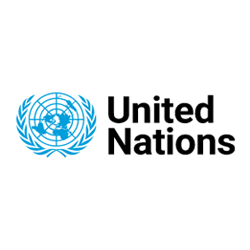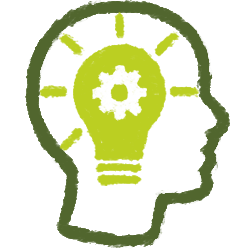The Good Life Goals
What are the Good Life Goals?
People around the world are becoming increasingly familiar with the Sustainable Development Goals (SDGs), but how many of us really know what we can do to reach them?
The Good Life Goals represent an effort to answer this question and help a global audience to recognize the vital role of individual action in achieving the SDGs. The Good Life Goals lay out 85 ways anyone can contribute towards the huge, planet-changing objectives that sit at the heart of the SDG agenda.
Who is behind them?
The Goals have been shaped through a multi-stakeholder collaboration between Futerra, the 10 YFP Sustainable Lifestyles and Education program, co-led by the governments of Sweden and Japan represented by the Stockholm Environment Institute (SEI) and the Institute for Global Environmental Strategies (IGES), as well as UN Environment, UNESCO and WBCSD.
THE BIG IDEA
People power matters as much as powerful people.
With our voice, our actions and how we treat each other and the world around us.
But we need to know what to do: the simple, collective and impactful actions people can take everywhere around the world.
The Good Life Goals will give everyone a role in making tomorrow better than today.
OVERVIEW
In Brief, the Good Life Goals are:
• 85 individual actions – 5 asks for each of the 17 SDGs
• Led by UN 10YFP & Futerra, supported by Governments of Japan and Sweden, IGES, SEI, UNESCO, UNEP and WBCSD
• An entry point for any government, NGO, or company in any sector, into the individual behaviours linked to activities, products and services, sustainable lifestyles, and the SDGs themselves.
• A highly engaging way of personalizing and humanizing the SDGs
• Primarily designed to be used by policy-makers, business, civil society, creatives and educators who want to communicate about the SDGs.
WHAT ARE THE GOOD LIFE GOALS?
The Good Life Goals are a set of personal actions that people around the world can take to help support the Sustainable Development Goals (SDGs). They are lifestyle asks for individuals that are carefully aligned with the SDGs 169 targets and indicators.
WHY WERE THE GOOD LIFE GOALS CREATED?
The Sustainable Development Goals have been transformational for policy-makers and business leaders in setting macro strategies towards urgent sustainability milestones that must be achieved by 2030. In parallel, a global movement for sustainable lifestyles is underway: a drive for a redefined “Good Life” involving individuals, brands, community groups, and educators.
The Good Life Goals were created to bridge the gap between the Sustainable Development Goals and the sustainable lifestyles movement. Their aim is to help policy-makers, businesses, civil society groups, educators and creative professionals inspire enthusiasm, connection and action from the public in support of the SDGs. By providing personally-relevant links to each SDG, the Good Life Goals send a message that we all, individually and collectively, can play an important role in the future.
We all have the right, responsibility, and the opportunity to change the world for the better.
HOW DO THE GOOD LIFE GOALS RELATE TO THE SUSTAINABLE DEVELOPMENT GOALS?
The Good Life Goals can help the global public to recognize the vital role of individual action in achieving the ambitions of the SDGs. They were created to have tangible impact, be relevant and accessible to the greatest number of people and be comprehensible by individuals around the world. Simple, positive, and engaging by design, the Good Life Goals detail the things that people can do, not a long list of things that they should not do.
The Good Life Goals were created to serve the Sustainable Development Goals – to inspire individuals to participate in the conversation and act on the SDGs in their everyday lives.
WHO ARE THE GOOD LIFE GOALS DESIGNED FOR?
Although ultimately written to be accessible by anyone, the most frequent users will be those who seek to engage with the public – policy makers, business, educators, creatives and community leaders.
IMPACT
The initial objectives of the Good Life Goals were straightforward and ambitious:
1 Increase recognition by decision-makers about how vital individual action can be in reaching the SDGs
2 Provide a clear link between the SDGs and sustainable lifestyles
3 Offer a tool for those seeking to engage the general public in making tomorrow better than today
WHAT WAS THE CRITERIA OF THE GOOD LIFE GOALS?
For each SDG multiple sources for potential actions were reviewed, and the 10 YFP partners each nominated asks.
The core group then reviewed this ‘long list’ against three strict criteria:
1 Will this action generate the greatest tangible impact on achievement of the Goal – if the public take it up at scale?
2 Will this action be accessible/relevant/affordable to the greatest number of people – for both over and under-consumers?
3 Is the action comprehensible to the public – at a secondary education reading level?
The balance between these three criteria was challenging.
As the ultimate guide and deciding factor, the partners returned to the 169 specific and time-bound targets under each SDG. There were many actions that were considered relevant as part of a wider sustainable lifestyle, but couldn’t be justified as contributing to a SDG target.
WHAT IS THE STRUCTURE OF THE GOOD LIFE GOALS?
Each Good Life Goal follows a similar structure.
There is a very simple headline (and associated emoji), followed by 5 actions:
• The first action is a ‘learning’ ask. This is the most accessible action and relevant even for children or those with limited control over their own lifestyles.
• The next 3 actions are of increasing behaviour challenge, in terms of lifestyle changes/cost/habit barriers.
• At least one action seeks to be positive/happy/upbeat/fun (where possible).
• The penultimate action is the most relevant to middle-class/over-consumers – it’s the hardest ask.
• The final action is to demand change from leaders (including political, business and community leaders)
This structure was designed to create consistency and allow for the greatest scope of possible audiences.
United Nations

PROFILE
As the world’s only truly universal global organization, the United Nations has become the foremost forum to address issues that transcend national boundaries and cannot be resolved by any one country acting alone.
To its initial goals of safeguarding peace, protecting human rights, establishing the framework for international justice and promoting economic and social progress, in the seven decades since its creation the United Nations has added on new challenges, such as AIDS, big data and climate change.
While conflict resolution and peacekeeping continue to be among its most visible efforts, the UN, along with its specialized agencies, is also engaged in a wide array of activities to improve people’s lives around the world – from disaster relief, through education and advancement of women, to peaceful uses of atomic energy.
Main Research Source
- Start Living The Good Life Goals video(25/09/2018)
I think it’s a tough job to make policy personal, meaningful and relevant to our daily lives. I think they’ve done a great job – something for everyone.
Next I need to find out how people have taken this on. Is it being used? Did it make a difference? Is it still being used? Is it still making a difference?

